Growing Garlic and How To Plant And Grow Garlic In Your Garden
Growing garlic is a luxury for cooks who love fresh seasonings. Plant and grow healthy, fragrant garlic in your garden bed or a container.

How to Grow Garlic
Growing garlic (Allium sativum) in the garden is great for those of us who cook as well as those who dine! Try growing some fresh garlic in a kitchen garden for a delicious and handy seasoning. It's a snap to grow at home and is a staple seasoning for dishes of many cultures and countries. Let's take a look at how easy it is to plant and grow garlic.
Tips For Growing Garlic
Growing garlic requires cool temperatures. Garlic can be planted in the fall and, if you live in a cold- winter zone, go ahead and plant garlic four to six weeks before you expect the ground to freeze. This gives the plant time for its roots to establish themselves in the cool months.
By early spring they're ready to produce those delicious bulbs. In milder climate zones you can continue to plant garlic through winter up until February.
How to Plant Garlic
The great thing about planting garlic is you can simply use store-bought cloves. We recommend choosing organically grown garlic. If you’ve purchased a fresh bulb you really like, separate the cloves without peeling their papery coating. Select the largest, healthiest-looking cloves to plant.
Sunlight
Garlic plants appreciate full sun. Locate a spot in your garden bed or determine the sunniest location where a large pot or planter can sit where it will receive at least six hours of sunlight each day.
Soil
Gardening tips, videos, info and more delivered right to your inbox!
Sign up for the Gardening Know How newsletter today and receive a free download of our most popular eBook "How to Grow Delicious Tomatoes."
Whether in a raised bed or a ground-level garden, garlic likes loose, well-draining soil. Sandy clay loam is great. It’s a good idea to add some organic matter like compost or well-aged manure. Some experts recommend a dose of lime. Otherwise, dig in two tablespoons of 5-10-10 fertilizer, fish meal or bone meal deep below where the garlic clove will be seated.
Planting
Be sure to give your garlic plants plenty of room to grow. In well-draining soil garlic has been known to develop root systems that can grow up to 3 feet (.9 m) deep, so a bed or container should be at least a foot tall.
Plant the cloves 2 inches (5 cm) deep and leave a few inches between them, or up to 6-12 inches (15-31 cm) for larger bulbs. Cloves should go into the soil with the fat end at the bottom, the root end at the top.
If you’re planting rows of garlic, they do best spaced 12-18 inches (30-46 cm) between the rows. For larger bulbs, space them even further apart. After planting your garlic cloves, spread some light mulch over them.
Watering
If there isn't much rain in your area, water the garlic plants while they’re growing just as you would any other green plant in your garden. However, in warmer summer months, garlic does not need much water as the bulbs grow.
Fertilizing
In early spring when the green plants have emerged and are growing it’s fine to fertilize them, but stop feeding them in spring once they begin to form bulbs. Early spring feeding is best done with organic fertilizer and can be done periodically until the bulbs begin to respond to longer days as spring approaches.
Problems
Garlic plants do not appreciate weeds and don’t compete well with them, so be sure the area stays well-weeded. Otherwise, garlic has very few problems from insects and disease.
Harvesting
To keep your bulbs growing larger, it’s best to remove the flowering stems as they appear in spring and early summer. However, the small, tender shoots are delicious and edible.
Begin to check for mature cloves around mid-summer for harvesting. Look for a strong covering of dry, papery skin, and check when the leaves of the plants begin to turn brown.
Curing
Garlic needs to cure and dry before it is stored. Dry the bulbs in a dry, warm space for a few days before removing the tops and the roots. Or, braid the green leaves together and hang them in a well-ventilated location. Air-dried garlic lasts 5 to 8 months.
For the long term consider freezing, drying, pickling or using the cloves to flavor oils and vinegars.
Other Uses and Companions
In addition to adding flavor to food, garlic is useful in other ways. It can be effective when used to make an insecticidal spray, which is much safer than chemicals and easy to make at home.
Another advantage to growing garlic is when it's planted among other garden plants, it repels aphids and spider mites.
There is a long list of plants that will grow happily near garlic. However don't plant asparagus, peas, beans, sage, and parsley near garlic as it can stunt their growth.
Italian, Thai, Chinese, Mexican, Peruvian, Mediterranean and American are just some of the cuisines that use garlic as a staple. The British Heart Foundation says, “Garlic has long been associated with health benefits – from curing a cold to lowering blood pressure and cholesterol levels. Garlic contains vitamins C and B6, manganese and selenium, but it's a chemical called allicin, a type of antioxidant, which is thought to be responsible for its positive effects.”
We love it just because it’s delicious.

Heather Rhoades founded Gardening Know How in 2007. She holds degrees from Cleveland State University and Northern Kentucky University. She is an avid gardener with a passion for community, and is a recipient of the Master Gardeners of Ohio Lifetime Achievement Award.
-
 Crops for Urban Growing: 8 Edible Plants For Urban Gardens
Crops for Urban Growing: 8 Edible Plants For Urban GardensUrban edible gardening lets your yard do double duty of beauty and practicality. Have fun combining edible plants with ornamentals.
By Teo Spengler
-
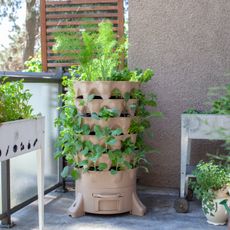 Clever Vertical Vegetable Garden Ideas For Small Spaces – 7 Ways To Save Space
Clever Vertical Vegetable Garden Ideas For Small Spaces – 7 Ways To Save SpaceShort on garden space? Learn some vegetable garden ideas for small spaces that are fun and easy.
By Mary Ellen Ellis
-
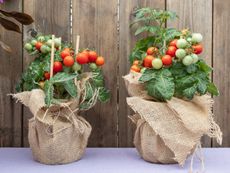 Growing Tomatoes In Containers For Beginners
Growing Tomatoes In Containers For BeginnersNothing says summer like homegrown tomatoes! Did you know you can grow tomatoes in pots? Click to learn how to grow tomatoes in containers.
By Laura Walters
-
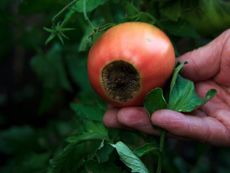 10 Common Tomato Diseases
10 Common Tomato DiseasesWhen your tomato plants stay healthy, you can harvest them all year long. Click here for the top 10 worst tomato diseases.
By Amy Draiss
-
 Do-It-Yourself Floral Pumpkin Centerpiece
Do-It-Yourself Floral Pumpkin CenterpieceCan you believe this pretty pumpkin centerpiece was made with just $13 worth of supplies? Plus, it was quick and easy.
By Amy Draiss
-
 Garden Harvest Tips – General Vegetable Harvesting Guidelines
Garden Harvest Tips – General Vegetable Harvesting GuidelinesVegetable harvesting at the correct time can make the difference between flavorful and unpalatable produce. Here are some garden harvest tips to follow.
By Amy Grant
-
 Best Herbs To Plant Together In One Pot
Best Herbs To Plant Together In One PotPlanting herbs together in one container is a beautiful way to have the herbs you need at your fingertips, but be sure the ones you choose are compatible with one another.
By Amy Grant
-
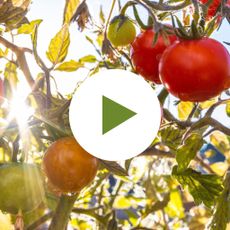 10 Hot Weather Vegetables That Thrive In Sweltering Summer Heat
10 Hot Weather Vegetables That Thrive In Sweltering Summer HeatThese hot weather vegetables, fruits, and flowers can handle the heat! A Georgia Master Gardener shares his top picks for hot and humid summer gardens.
By Laura Walters
-
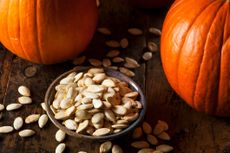 Saving Pumpkin Seeds: How To Store Pumpkin Seed For Planting
Saving Pumpkin Seeds: How To Store Pumpkin Seed For PlantingSaving pumpkin seeds is easy. Planting pumpkin seeds from pumpkins you have enjoyed also ensures that you can enjoy them again next year. Read this article for tips on how to harvest and save pumpkin seeds.
By Heather Rhoades
-
 How And When To Harvest Garlic
How And When To Harvest GarlicHarvest garlic when at least one third of the leaves have dried and turned brown. Dig the bulbs out with a trowel - don't pull!
By Heather Rhoades